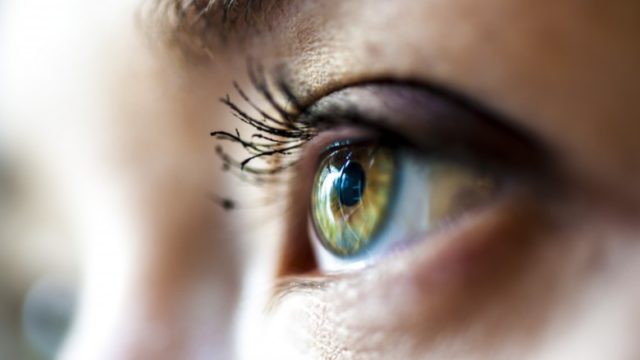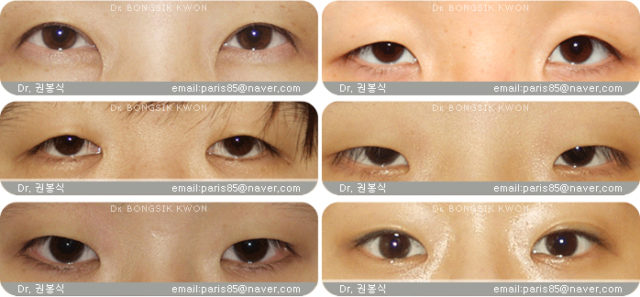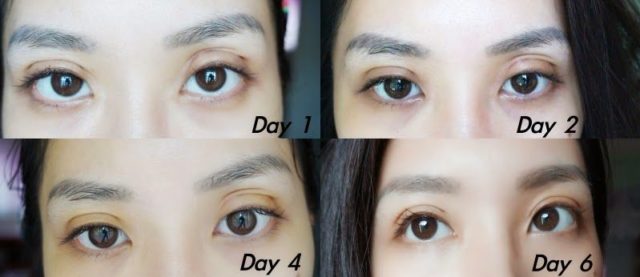
Double eyelid surgery in Singapore has been huge for the past decade, as more and more patients open their minds and wallets to the procedure. What has made it so tempting is the fact that newer techniques periodically emerge on the medical scene, allowing people to get the desired alterations without subjecting themselves to open surgery. Before you make a decision yourself, take a peek at this review to find out what the treatment has in store for you.
What Are Double Eyelids?

Some people have no visible folds above their eyes, a harmless act of nature which human beings call monolids. By contrast, others were born with natural creases, referred to as double eyelids. Part of the Asian population is associated with the former type, and many seek ways to have it ‘fixed’ because they find it unattractive.
Apart from the cosmetic side of it, some individuals also have eyelid surgery to enhance eyesight when weak, droopy muscles take over and become a problem. In other words, the reasons aren’t always grounded on looks per se, and sometimes there are more serious prerequisites for such a decision.
The majority of Asians share the view that an extra fold in the lids gives the complexion vividness and alertness as opposed to mono-lidded eyes, which make one look drowsy and tired. So, they turn to a surgeon like Dr. Samuel Ho from allureplasticsurgery.sg to discuss the possibilities of altering what Mother Nature gave them.
Types of Double Eyelid Surgery in Singapore

Medically speaking, double eyelid surgery goes by the name blepharoplasty. Currently, there are two major techniques available, and they are used around the world. One involves incisions, and the other one does not.
Modern medicine has found a way to treat the same condition using different methods, either by opening the skin or by avoiding cuts in general. Thanks to technologies and the vast medical experience passed down from generation to generation, professionals can now successfully identify who will benefit more from one technique as compared to another, and vice versa.
It also enables patients to select sparing treatments that take less time to heal and produce quicker results. Not to mention, those at risk of complications could still undergo a given procedure without putting their health on the line.
That being said, here are the two types of double eyelid surgery.
Incisional

The outcome of this manipulation cannot be reversed, as it yields permanent results. It is recommended when there is too much fat in the lids that need to be dismissed.
Without going into all the details of how it is done, let’s touch on the basic steps:
First, the surgeon will mark the targeted area with a pen for accurate measuring. Then, the patient will be administered a local anesthetic and general anesthesia or IV sedation (it will be discussed earlier on).
The doctor will make tiny incisions into the eyelid line according to the pre-marked areas.
They will cut the skin open and remove a patch of it to allow access to the muscle and tissue underneath. The latter will be taken out or moved around.
In the end, the specialist will close the incisions. If stitches are used, they will be removed on day five post-op. If the staff goes for skin glue, there is no need for further manipulations.
When the wound heals, a scar will form, which will help to keep the illusion that there is an actual crease in the lid. It will be obvious when you close your eyes, but you can easily hide it with makeup if it bothers you that much.
Non-incisional

A more advanced technique is where the skin is not cut with a scalpel. Instead, the area is pre-marked the same way it is with the incisional method. Then, the doctor makes little punctures over the line in order to insert sutures inside. When the job is done, the specialist will tighten the sutures so that a crease forms, but they will not be visible.
What is convenient about this treatment is that patients don’t need to return to the doctor’s office to have the stitches removed. It does use IV sedation or general anesthesia depending on the evaluation of the doctor and the person’s overall health. If the situation calls for it, a local anesthetic will be added as well.
The procedure is recommended for people who don’t have skin or fat that needs to be cut off. The scar is almost invisible, and no one can tell that you have made any changes to your eyelids. They will see the difference, but they will not be able to attribute it to any surgical manipulation. Furthermore, the effects can easily be reversed if you later regret your decision.
Recovery

Most patients report that they have been able to go back to their normal lives after ten days of post-surgery.
It is normal to notice swelling and bruising in the treated area after the operation. They will resolve quickly; you just have to be patient. Other side effects you are likely to develop are sensitivity to lightness, dry and itchy skin, tightness, and soreness. Get in touch with your medical provider if they don’t go away in a few days or if they get worse.
Results
Double eyelid surgery has over 90% satisfaction rate on a global scale, and the outcome is quick to notice – usually right after the surgery. Of course, the results will reveal over time as you are going out of recovery and into your daily routine again.
Consultation: What to Discuss With Your Doctor
The purpose of this consultation is to outline your options, the possible risks related to each treatment, what benefits lie underneath, and everything in between. It makes sense that you ask your surgeon questions about the procedure and – respectively – answer theirs sincerely.

Here is what to do during your appointment:
- Mention any problems you have had or are still experiencing around your eye region
- Talk about your expectations – learn if you need to take things slowly
- Deliberate on what techniques are available and would be best implemented in your case, incisional and non-incisional alike
- Inquire about the type of anesthesia they intend to use on you
- Tell your doctor if you are taking any medications or if you have pre-existing conditions
- Learn about recovery: how long will it take for the wound to heal, do you need to take time off work, etc.?
- Ask for pictures of other patients who have been through this and see if their results appeal to you.
Try to be as accurate and thorough as possible because the information you divulge will dictate how things go in the operating room and after that. Do not omit anything that might be case-relevant.






